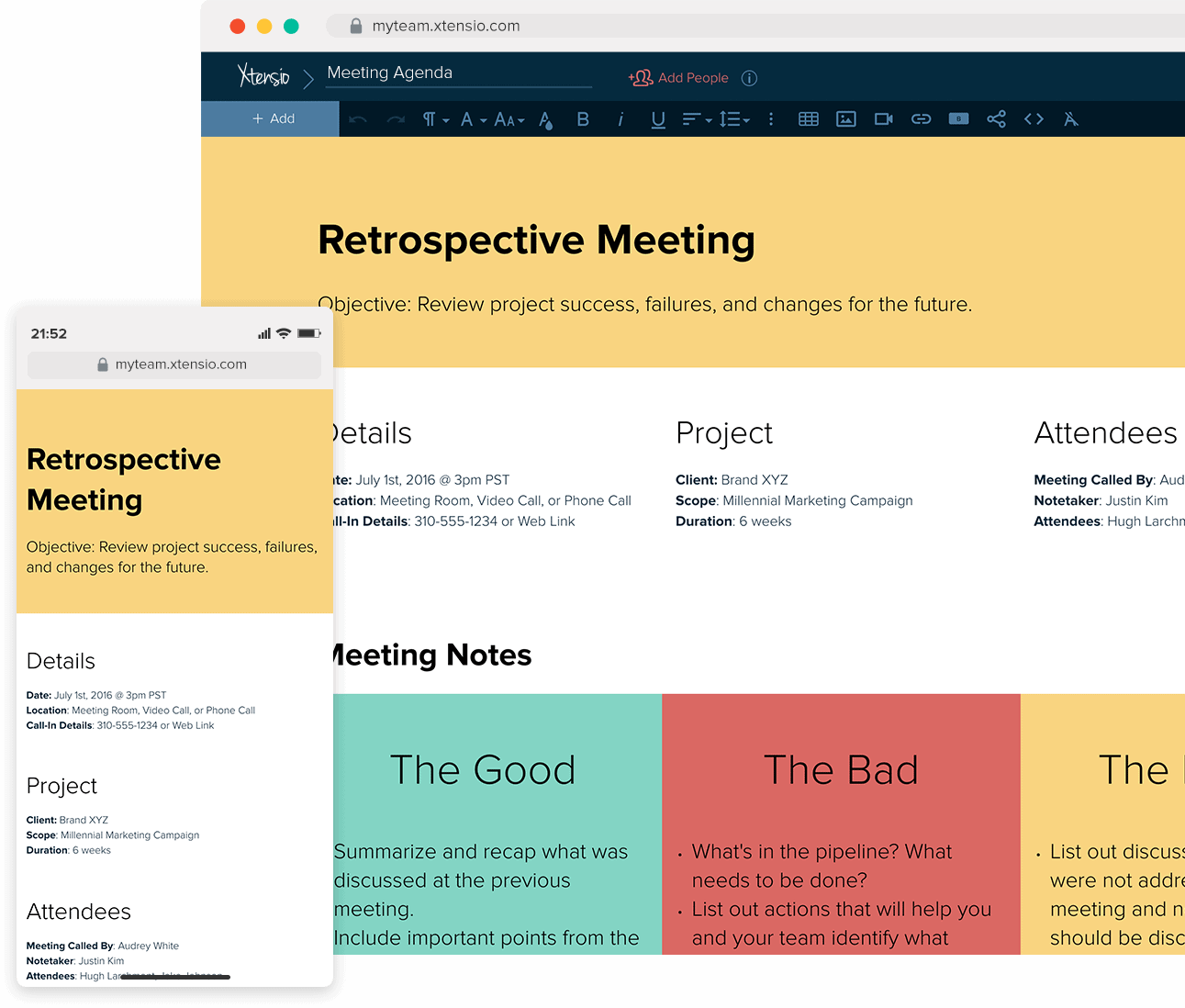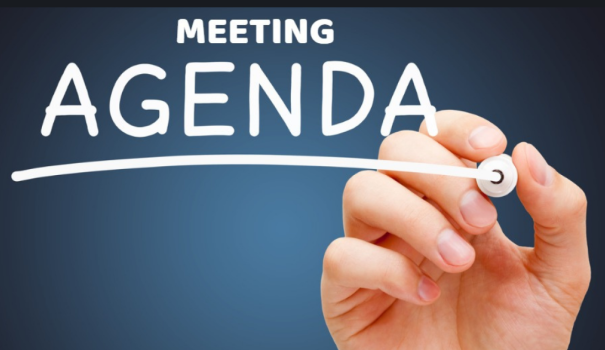
An agenda is a document that outlines the topics or items to be discussed during a meeting. It serves as a roadmap for the agenda meetings, helping to keep the discussion focused and productive. The agenda typically includes a list of the topics to be covered, the order in which they will be discussed, and the amount of time allocated to each topic. It may also include any relevant background information or documents that participants should review beforehand. The agenda meetings is usually distributed to participants in advance of the meeting so that they can prepare and come ready to contribute to the discussion. Overall, an agenda is a critical tool for ensuring that meetings are effective and efficient and that all participants are able to contribute and stay engaged.
What should be included in a meeting agenda?

An agenda meetings should include the following elements:
- Date, time, and location of the meeting
- List of attendees (optional)
- Call to order and introduction
- Approval of previous meeting minutes (if applicable)
- Old business (topics that were previously discussed and require follow-up)
- New business (topics that need to be discussed for the first time)
- Discussion topics, listed in order of priority
- Time allocated for each discussion topic
- Action items (tasks assigned to individuals during the meeting)
- Next meeting date, time, and location
- Adjournment
It is also recommended to provide any necessary background materials, such as reports or data, to help participants prepare for the meeting. Additionally, the agenda should be distributed to participants in advance, ideally at least a day or two prior to the meeting, to allow them to review the topics and prepare their contributions.
5 things you must include in a meeting agenda

Here are five things that you must include in a meeting agenda:
- Meeting Objective:
Clearly state the objective or purpose of the meeting, so that everyone understands what is expected to be achieved during the meeting.
- Agenda Items:
List the topics to be discussed in the meeting in order of priority. Ensure that each agenda meetings item is clear and concise, with specific action items to be taken, if any.
- Time Allotment:
Allocate sufficient time for each agenda item, considering the importance and complexity of the topic. Be realistic in your time allocation to avoid rushing through important discussions.
- Attendees:
List the names of the attendees who are expected to participate in the meeting. This will help ensure that everyone who needs to be present is in attendance.
- Meeting Logistics:
Provide logistical details, such as the meeting date, time, location, and any other important instructions or materials that attendees need to prepare for the meeting. This will help ensure that everyone is on the same page and prepared for the meeting.
What 7 information items must appear on the agenda?
Here are seven information items that must appear on a meeting agenda:
- Meeting Title:
The title should indicate the purpose or theme of the meeting.
- Date, Time, and Location:
The date, time, and location of the meeting should be clearly specified so that participants can plan accordingly and arrive on time.
- Meeting Objective:
A brief statement that clearly describes the objective or purpose of the meeting. This will help attendees understand what is expected to be achieved during the meeting.
- Agenda Items:
A list of the topics to be discussed during the meeting in the order of priority, along with the estimated time for each item.
- Attendees:
The names of the attendees expected to participate in the meeting, including any guests or presenters.
- Preparation Materials:
Any necessary background materials, such as reports or data, that participants need to review in advance of the meeting.
- Next Steps:
A summary of the action items or decisions that were made during the meeting, along with the names of the individuals responsible for completing each task, and the deadline for completion. This will help ensure that everyone is clear on the next steps and what is expected of them.
Meeting agenda topics

The topics included in a meeting agenda will vary depending on the purpose of the meeting and the needs of the participants. Here are some common meeting agenda topics that may be included:
- Welcome and Introductions:
A brief introduction to the meeting and an opportunity for participants to introduce themselves.
- Review of Previous Meeting Minutes:
A review and approval of the minutes from the previous meeting, along with any action items that were assigned.
- Old Business:
A review of any unfinished business from previous meetings that requires follow-up.
- New Business:
A discussion of new items that need to be addressed in the current meeting.
- Reports:
Reports from different departments or committees can be presented for review and discussion.
- Open Forum:
A time set aside for participants to bring up any issues, concerns or ideas that were not covered in the agenda.
- Action Items:
A review of any action items from the meeting, along with the names of the individuals responsible for completing each task, and the deadline for completion.
- Next Meeting:
Setting the date, time, and location of the next meeting, and any other necessary details.
- Adjournment:
A formal end to the meeting.
It’s important to note that the agenda should be tailored to the specific needs of the meeting and may vary depending on the organization, group, or team that is meeting.
How to ask for agenda items for a meeting
Here are some steps you can follow to ask for agenda items for a meeting:
- Send a Reminder:
A few days before the meeting, send a reminder to all participants requesting them to send in any agenda items they would like to discuss.
- Set a Deadline:
Set a deadline for participants to submit their agenda items. This will give you enough time to organize and prioritize the topics for the meeting.
- Provide Guidance:
Provide guidance on the types of topics that are suitable for the meeting, including any specific questions or issues that need to be addressed.
- Follow Up:
Follow up with participants who haven’t submitted any agenda items to remind them of the deadline and encourage them to share any topics that they would like to discuss.
- Organize the Agenda:
After receiving all the agenda items, organize them in a logical order, and allocate sufficient time for each item, considering the importance and complexity of the topic.
- Share the Agenda:
Share the final agenda with all participants at least a day or two before the meeting, so that they have enough time to prepare and contribute to the discussion.
Meeting agenda example
Here is an example of a meeting agenda:
Meeting Title: Marketing Strategy Meeting
- Date: April 15, 2023
- Time: 10:00 AM – 12:00 PM
- Location: Conference Room A
Agenda:
- Welcome and Introductions (10 mins)
- Introduction of new team members
- Review of agenda
- Review of Previous Meeting Minutes (5 mins)
- Approval of minutes from last meeting
- Action items follow-up
- Marketing Campaign Updates (30 mins)
- Review of current marketing campaigns and their effectiveness
- Discussion of new campaign ideas
- Social Media Strategy (20 mins)
- Review of social media channels and their performance
- Discussion of new strategies to increase engagement
- Website Optimization (20 mins)
- Review of website traffic and user engagement
- Discussion of new strategies to improve website performance
- Budget Review (15 mins)
- Review of marketing budget and expenditures
- Discussion of budget adjustments and reallocation
- Action Items (10 mins)
- Assign action items to team members
- Review of next steps and deadlines
- Next Meeting (5 mins)
- Schedule date, time, and location for the next meeting
- Review of agenda items for the next meeting
- Adjournment
By following this agenda, the meeting can be structured, productive, and focused on the key topics that need to be addressed.
Faqs
Q.1 Why is an agenda important for a meeting?
An agenda is important for a meeting because it helps to keep the discussion focused and on track, ensures that all important topics are addressed, and helps to manage the time effectively. It also provides a structure for the meeting and ensures that everyone is prepared and ready to contribute to the discussion.
Q.2 Who is responsible for creating the meeting agenda?
The meeting organizer is typically responsible for creating the meeting agenda, but they may seek input from other participants to ensure that all important topics are covered.
Q.3 How should the meeting agenda be distributed?
The meeting agenda should be distributed to all participants at least a day or two before the meeting so that everyone has enough time to prepare and contribute to the discussion. The agenda can be distributed via email, shared in a project management tool, or posted in a shared document.
Q.4 Can the meeting agenda be changed during the meeting?
While it is generally best to stick to the agenda, there may be times when adjustments need to be made during the meeting. This should be done sparingly and only if the change is necessary and will not detract from the overall productivity of the meeting.
Q.5 What should be done with the meeting agenda after the meeting?
After the meeting, the agenda should be reviewed to ensure that all action items have been assigned and that all important topics have been addressed. The meeting minutes should be prepared based on the agenda and distributed to all participants, along with any other relevant documents or materials. The agenda can be used as a reference for future meetings, and should be updated as needed to reflect changing priorities or new topics that need to be addressed.
Conclusion
In conclusion, an effective meeting agenda is essential for organizing and facilitating productive meetings. It helps to keep the discussion focused, ensures that all important topics are addressed, and helps to manage the time effectively. When creating a meeting agenda, it’s important to include key information such as the meeting title, date, time, location, and a list of topics to be discussed. It’s also important to distribute the agenda to all participants before the meeting, and to follow up with any action items or next steps after the meeting. By following these guidelines, meetings can be more efficient, productive, and successful in achieving their intended objectives.





